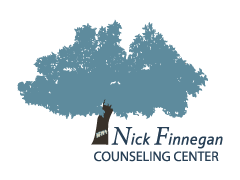How to Truly Give and Receive Forgiveness
By Tracy Lehman, MA, LMFT, Outreach Counselor
Almost all of us have had that experience of wronging someone and not being able to realize and express accountability and regret in time to save the friendship. Similarly, many have the experience of holding a grudge for too long and losing sight of the positives a relationship once offered us.
Apologizing and forgiving are two of the hardest things to do for adults and kids alike. We have associated both with shame and experience resistance in the form of pride (our armor to offset the shame).
August 27th is Global Forgiveness Day, an opportunity to apologize, forgive, or both. So, how do we do this? What does it look like?
When I am working with clients on this, we often start with what I consider the most necessary step of looking inward. Our emotions and related cognitions often run the show when it comes to painful interactions and it is important to understand not only what offense triggered you, but why, and how the resulting feelings coded and narrowed your thoughts into a tunnel vision. What do I mean by this? Well, our most extreme and visceral feelings tend to create a kind of tunnel in our thought processes where all we can see is through that feeling which often means casing every action in negativity and being unable to acknowledge other options or experiences. The format of this exploration usually goes; 1. What happened? 2. What did you feel? 3. What did you think? 4. How did you respond? This goes for both the person who has been wronged and the wrongdoer because rarely if ever does a hurtful action come from nothing. It is more often than not a reaction to or in avoidance of a negative feeling. So, step 1 is always, develop insight around the event.
Next, I usually have client’s try to empathize with the person who they wronged or who wronged them and identify what intentions they have for working through this hurt. Do they want to mend a relationship? Do they just need to let go? Do they need to heal? Empathy plays two roles here. One it allows you to take a, honest look at the relationship and determine its value as well as allows the person to remember who the other person is. What qualities do they have as a person? What fears or hurts could have contributed to their action? What was it like for that person to experience hurt from you? The second role is that developing empathy allows you to determine your intention. Is this a valuable relationship that we should attempt to salvage? Did this experience follow us and we need to understand why it happened to let it go?
Once we have explored the other party in a hurtful situation and set an intention, we can move to processing. Often I have people write a letter exploring both the relationship, acknowledging gained understanding, expressing the hurt or anger, and exploring the hurtful choice or interaction. This is a letter that the other party never has to see, but creates the opportunity for you to practice asking for or offering forgiveness. Some clients have to write their letters more than once an act that allows the brain to fully process all of the thoughts and feelings and integrate new understandings. After that, clients may decide they have gotten to resolution and are able to entirely let the event go, or they may choose to reach out and ask for or offer forgiveness, and some choose to send the other party their letter. There is no right or wrong choice here. It is about knowing what you need to fulfill your intention.
Now that we have established how to make amends, here are some more tips:
1. Practice makes perfect. Our brain loves repetition. It creates and reinforces neural pathways which makes us more adept at tasks. Practicing small acts of forgiveness and apologizing can help build those pathways and allow you to overcome limiting emotions like shame and pride.
2. Forgiving and letting go is a journey. Things that are especially painful will likely be triggered by similar events or reminders throughout your life. Acknowledging these things as they come up and referring back to your process letter or developed insight can continue to help you through this process.
I hope you find this article helpful and utilize it to release yourself from pain so you may find true freedom and healing.
